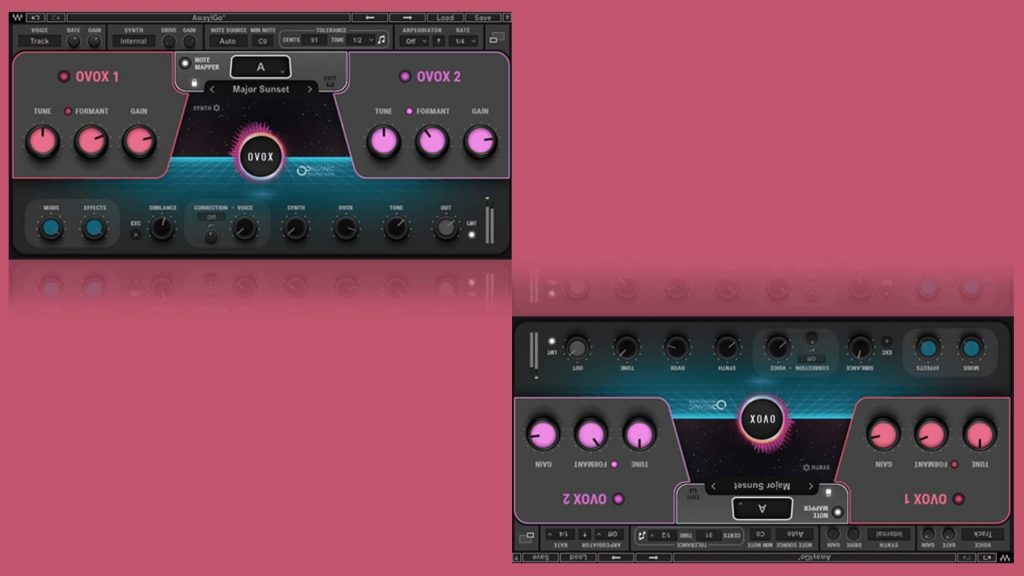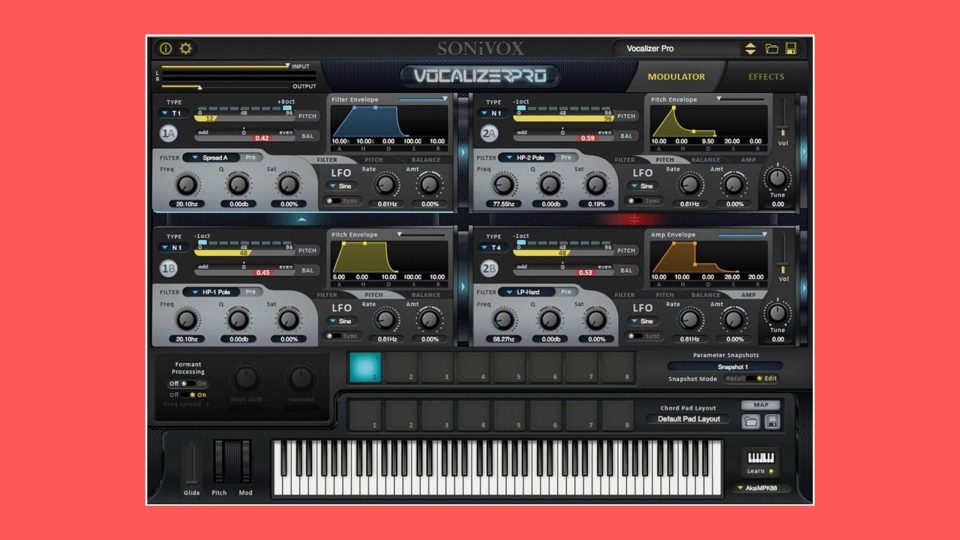Define Synthesis: How Do Vocoders Work?
Define Synthesis: Bonus
We couldn’t help ourselves…
You, my trusty synthesis enthusiast, have followed us from the beginning of time (last week) where we forged the steel of synthesis methods and pledged to learn them all!
Well, we did that… so we wanted to cover one more: vocoders!
Define Synthesis Series
How Do Synthesizers Work?
How Does Subtractive Synthesis Work?
How Does Additive Synthesis Work?
How Does FM Synthesis Work?
How Does Wavetable Synthesis Work?
How Does Vector Synthesis Work?
How Does AM Synthesis Work?
How Does Modular Synthesis Work?
How Does Granular Synthesis?
How Does Sample Based Synthesis Work?
How Does Spectral Synthesis Work?
How Do Vocoders Work?
What is a Vocoder? What Does A Vocoder Do?
A vocoder is a unique kind of synthesizer that manipulates how vocals sound. Think back to FM synthesis and the relationship between modulators and carriers. Vocoders use a very similar process.
Are you after a robotic sound to spice up your Mixxed vocal samples? A vocoder is the one!
Vocoders Explained
Vocoders need two sound sources. One is a carrier, and one is a modulator.
Like in FM synthesis, your carrier is your initial sound source. In this case, it would be a synth that you made by reading our Define Synthesis series!
And again, your modulator is the sound whose harmonic characteristics manipulate the frequency of the carrier and shape its sound. The modulator would be your vocals or your chosen vocal samples.
As well as these two sound sources, vocoders use filters that are adapted to the modulator frequency.
Before the filters come into the chain, the vocoder analyse your modulator vocals and split your audio into different frequency bands.
More frequency bands = a more realistic final sound.
Once the vocoder has analysed the modulator, your audio is recreated and sent through bandpass filters (each frequency band gets its own filter).
After the level of each frequency band has been sent as a signal to the filters, the carrier signal is sent through the filters too!
Now that the carrier signal has been sent through the filters, the vocoder raises or lowers the level of each individual filter – all depending on the harmonics of your modulator signal!
So, the carrier signal is filtered so its harmonic content that does pass through is similar to the harmonic content of the modulator signal… pretty cool, right?

How to Use a Vocoder
If you’re looking to get super duper results from your vocoder, it’s best to use a carrier signal that is rich in harmonic content like a saw wave at the very least.
The more harmonic content that you provide your vocoder, the more evident the modulation effects will be. A sine wave or triangle wave won’t bring you an ultra robotic sound as a sawtooth or square wave will!
A handy little tip I’ve learned is to compress your carrier signal before it hits the vocoder, as well as a slight bit of saturation. By limiting the signals’ dynamic range, the effects of the filters will be more evident!
When it comes to your voice/modulator signal, don’t hold back! Pronounce words clearly than you would in an everyday conversation. The harmonic content compared to the carrier signal will be different, so for a distinguishable vocoder effect, it’s important to choose words that contain a lot of vowels, for example. The golden ticket is to focus on the characteristics of your voice. Make it as clear as possible!

Vocoder Parameters
Bands are the number of frequency bands that the modulator signal is split into. We said before that the more bands there are the more realistic the output will be. 8 – 12 bands will give you a classic vocoder sound, but upping the bands will enable you to get really creative!
Frequency range is the upper and lower limits of the carrier signal frequency that’s accepted by the vocoder. For a distinguishable vocoder output signal, raise the upper limit above 5 kHz and see if you like what you hear!
Formant, which may also be referred to as shift, increases or decreases the frequency of the filters. Depending on whether the filters are attenuated or increased, the output will sound brighter or deeper. Some vocoders, however, have a “gender” parameter. This is because formant can manipulate the output to sound like it’s a male or a female voice.
Unvoiced, or plosives, are a natural part of human speech. They’re produced when we make a consonant (a letter that isn’t a vowel) that needs air to blow through our lips. If you’ve recorded vocals, you’ve dealt with these before. The two culprits who cause problems more than others are “p” & “b“.
Lots of digital vocoders can find these airy sounds because they cover a specific frequency range as they’re produced from pitched and vibrating vocal cord sounds. With the use of an “Unvoiced” knob, you can mix a noise generator in with your carrier signal so the unpitched transient sounds of unvoiced sounds remain audible in your output.
